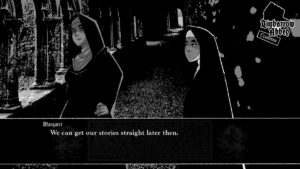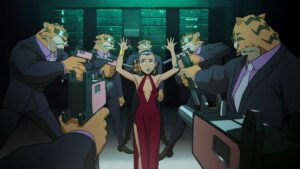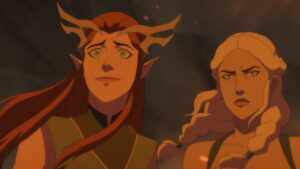Though we’re only halfway through the year, it’s been packed with excellent science fiction and fantasy books. Many of our favorites once again blur the line between sci-fi and fantasy — but this year was a particular standout for books blurring the line between SFF and other genres, from historical fiction Westerns to fable retellings to intergenerational sagas in translation.
Though we seem to have crested the wave of pandemic novels, that sense of dread and discoloration has lingered, written into novels of new forms. There’s a preponderance of post-post apocalyptic science fiction unpacking lofty ideas like sentience and humanity, often set on different planets or among the stars. It has also been a standout year, so far, for supernatural horrors and thrillers.
So jump in and take your pick. Whichever direction you head in, it will be sure to grip you — and make you think. We’ll keep this updated throughout the year, in reverse chronological order, so the newest releases will always be listed first. Our latest update added Witch King; My Murder; Mister Magic; Antimatter Blues; Fourth Wing; Ink Blood Sister Scribe; Deep as the Sky, Red as the Sea; Translation State; The Surviving Sky; The Lost War; and The Jasad Heir.
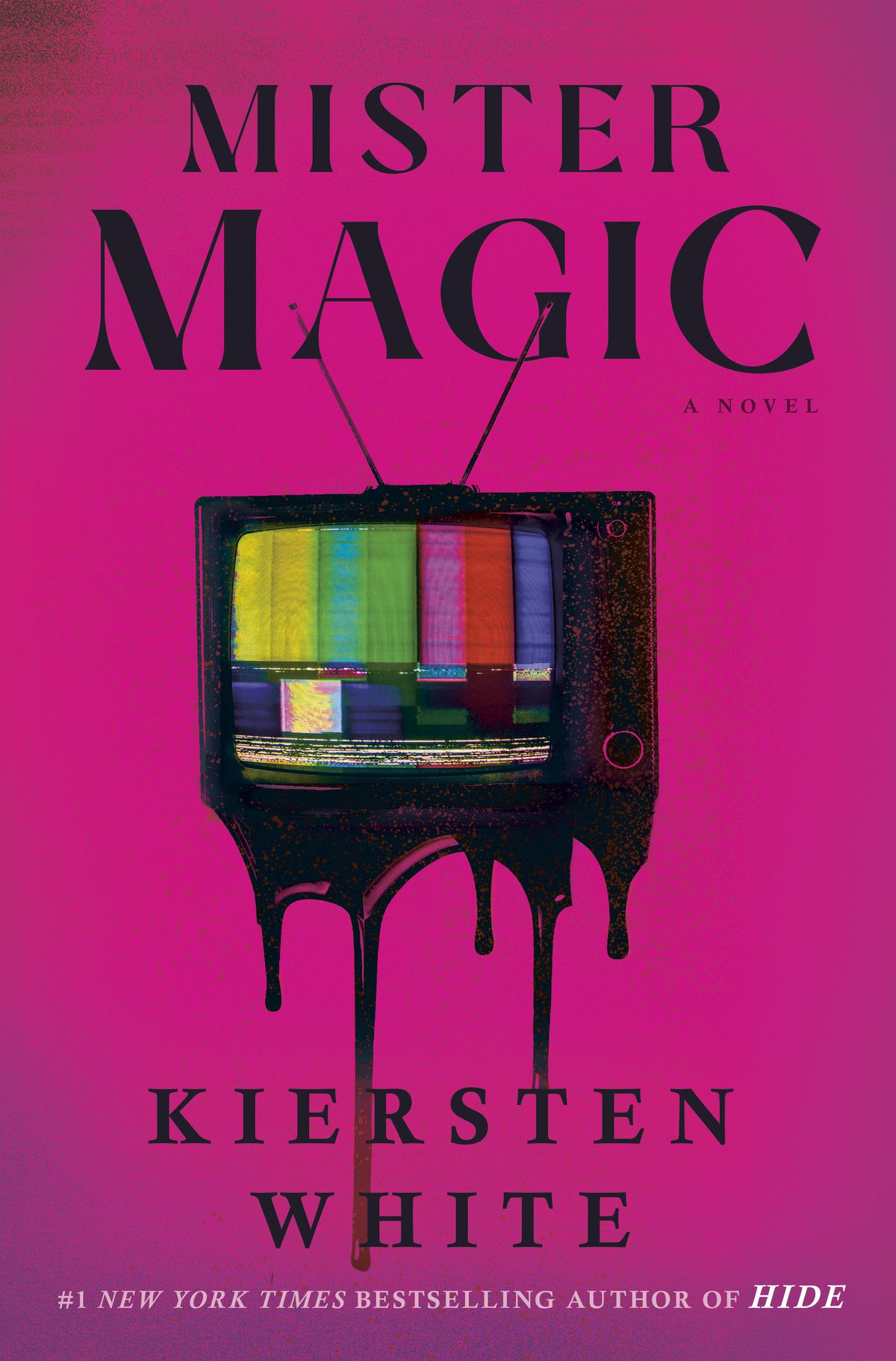
The latest fantasy-with-an-irresistible-pop-premise from the author of Hide, Mister Magic revolves around a children’s TV show no viewer can forget … or prove it ever existed in the first place. There are no official records of it, no YouTube videos or merchandise or passed-around VHS tapes, and any discussion of it on the internet rapidly disappears. But the people who remember seeing it are convinced the special effects were remarkably vivid and realistic. They agree the central concept is unnerving: a creepy magician-figure leading a group of children in imagination-games aimed at teaching some decidedly non-standard lessons about embracing conformity and meekness. And they’re all sure that something horrible happened while they were watching, though they can’t agree on what.
A reunion between five of the former child cast members, taking place 30 years after the show ended, slowly unravels its mysteries, which are even weirder than the description above suggests. Mister Magic is a startling dark fantasy with a lot of foreboding, foreshadowing, and eerie twists. At heart, though, it’s also an incisive story about the kinds of people who revel in control over other people’s lives, and about what an act of rebellion imagination can be. —Tasha Robinson
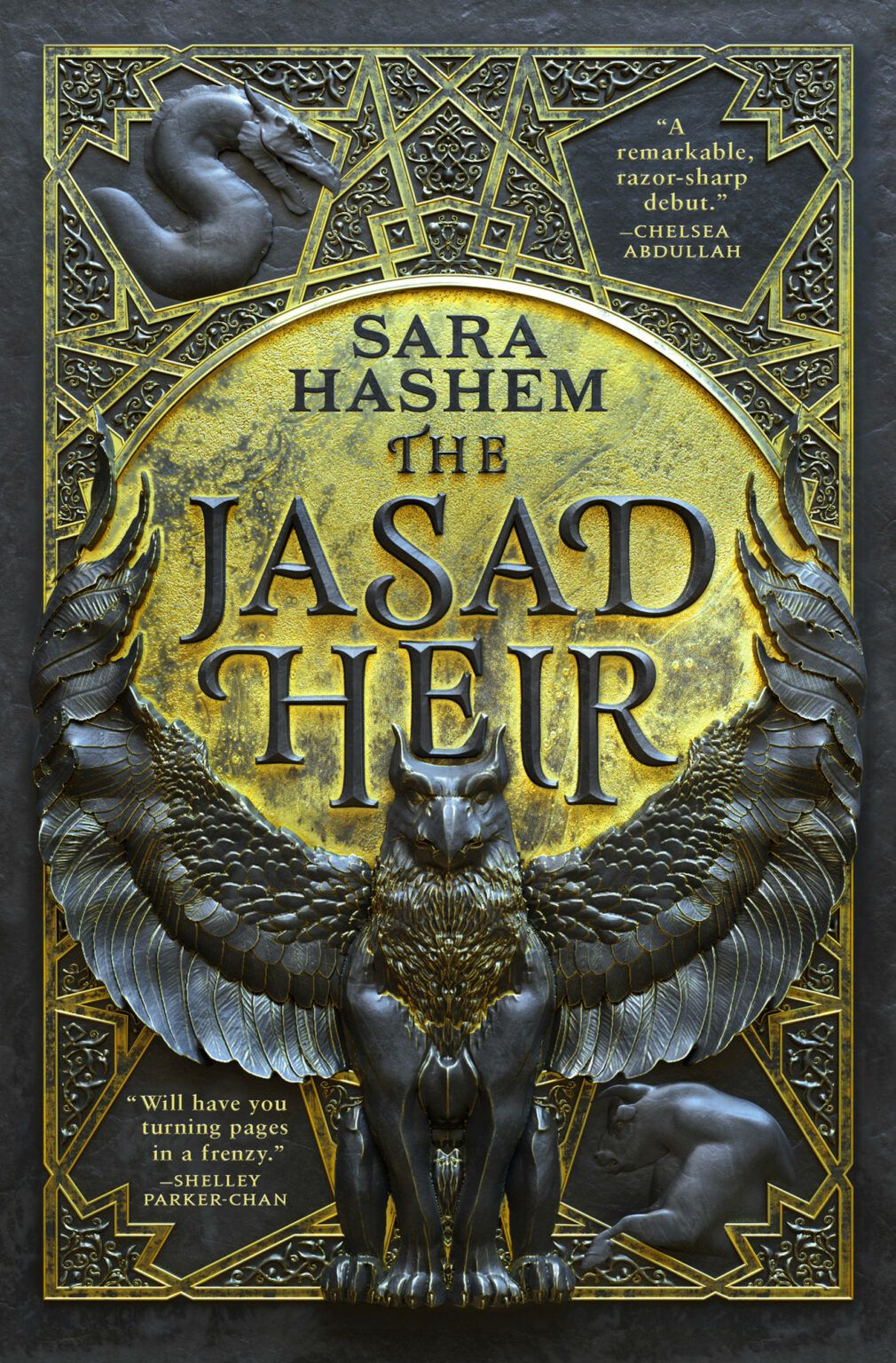
The Jasad Heir (The Scorched Throne #1) by Sara Hashem
“Arin of Nizahl was maddeningly elegant. I wanted to cut him open and compare our bones to understand why his gave him grace and mine gave me back pain.” This was the line that absolutely sold me on The Jasad Heir, an irresistible enemies-to-lovers fantasy that reminded me why I’ll never quit this genre.
Headstrong Sylvia is the presumed dead heir of Jasad, a kingdom that was destroyed by the neighboring Nizahl and saw its citizens’ innate magic outlawed. Sylvia managed to carve out a relatively normal life for herself as a chemist’s apprentice, but everything falls apart after she accidentally reveals her magic to the heir of Nizahl. Using her life as leverage, the calculating Arin strikes a deal with Sylvia to help him capture a group of Jasadi rebels and act as his champion in a series of deadly trials. It’s a familiar setup, but one impeccably done by Hashem, who delivers sharp political intrigue, sparkling banter, and touching friendships on top of Sylvia and Arin’s simmering romance. — Sadie Gennis
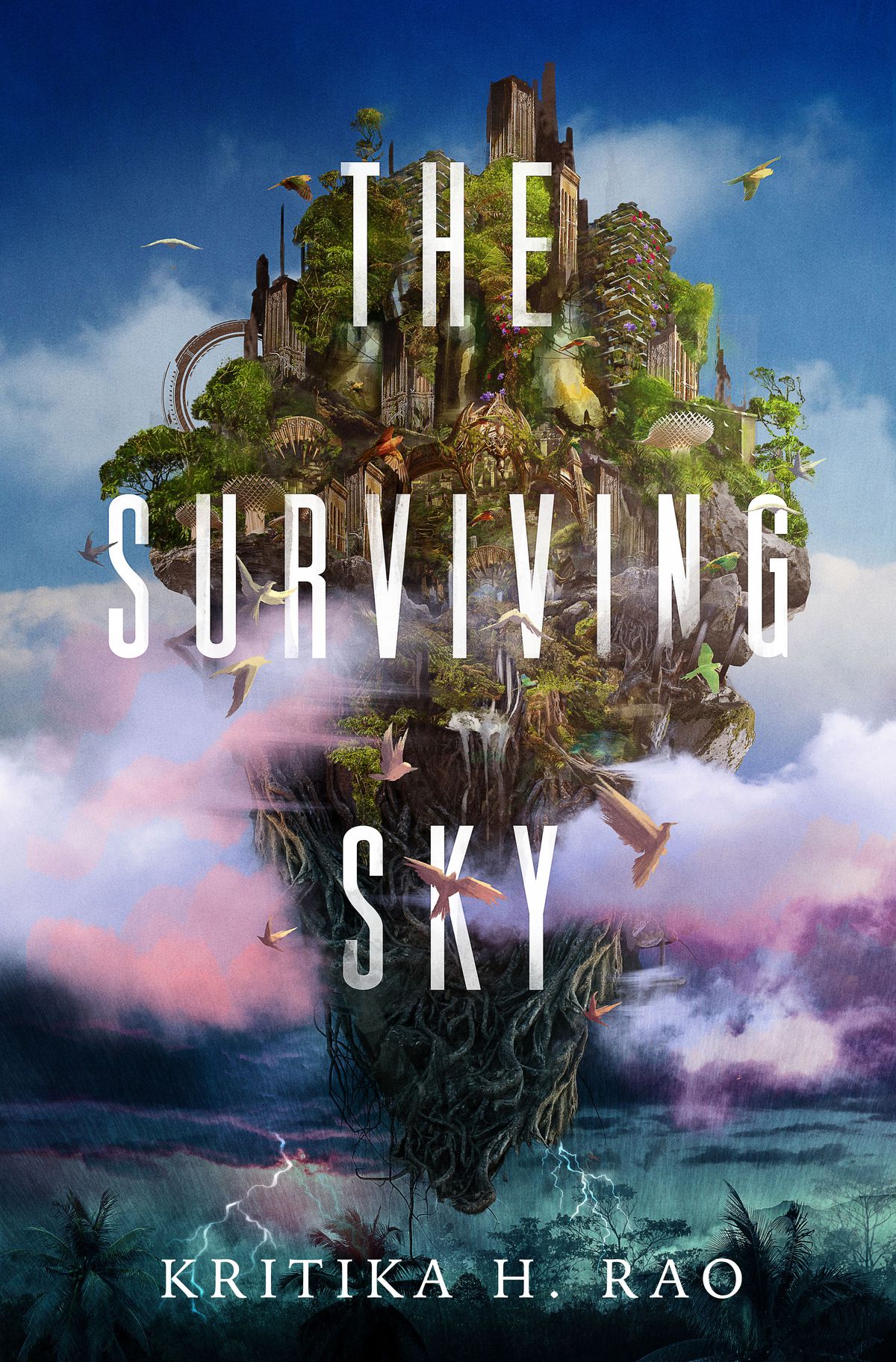
The Surviving Sky (The Rages Trilogy #1), Kritika H. Rao
After I finished The Surviving Sky, I wouldn’t shut up about it and tried (not always successfully) to get everyone I know to read it. So let me try once more, and maybe with less yelling this time:
With the planet’s surface made unlivable by catastrophic storms, the remains of humanity survive on floating cities constructed of and powered by plants that only a select group of people, known as architects, can control. An archeologist without the ability to traject plants, Ahilya has dedicated her life to finding a way to unshackle humanity’s survival from the architects’ powers and return to the surface. It’s not hard to see why this mission causes friction in her marriage to Iravan, one of the most powerful architects in their city, and one with an arrogance to match his revered status. Though estranged, Ahilya and Iravan come together to help clear his name after he’s accused of pushing his powers dangerously far, an accusation, which if proved true, carries dire consequences for the architect.
But the deeper they look into trajection and its risks, the more Ahilya and Iravan realize they don’t actually know much about where their people – and their powers – came from. And as the floating cities begin to sink toward the earthrages below, the race to save their civilization may also be the end of society as it stands, as Ahilya and Iravan uncover long-buried truths that previous generations worked hard to keep hidden.
So did I do it? Did I convince you to read this Hindu philosophy-inspired debut with some of the most inventive world-building and one of the most complex romances I’ve read in years? Please say yes. You’ll be doing us both a favor. —SG
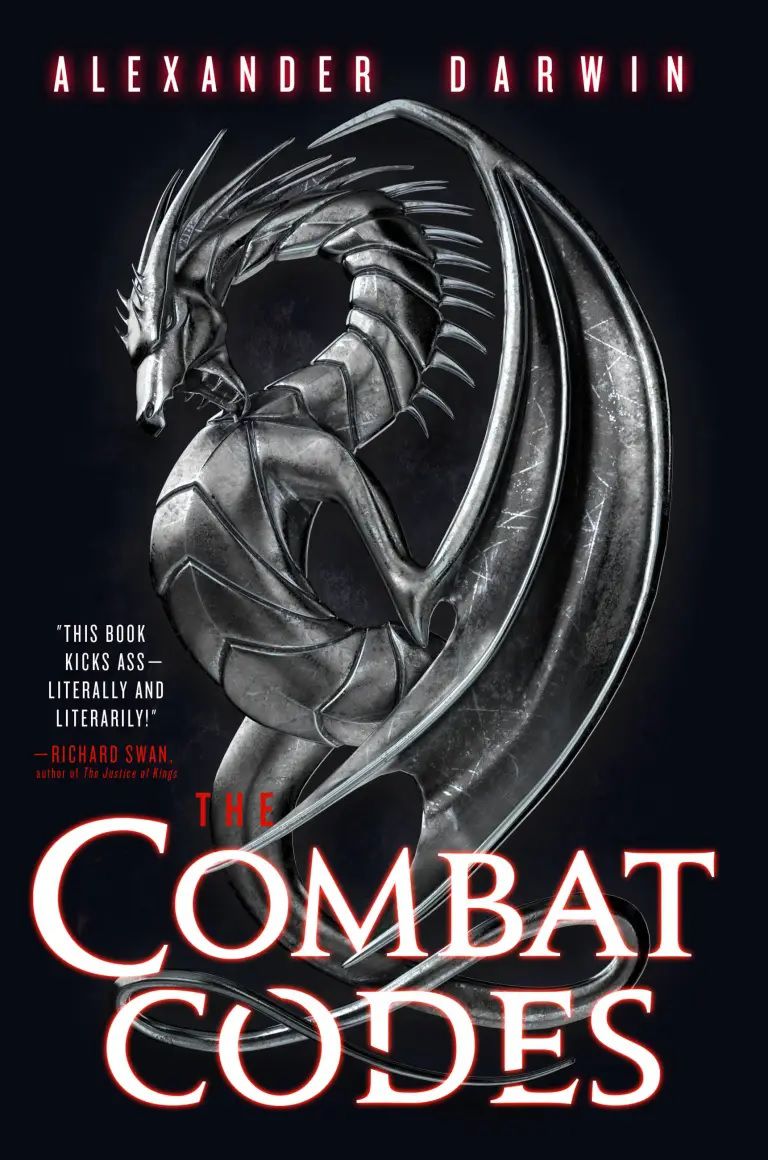
In the world of The Combat Codes, war no longer exists as it used to. Neither does justice — both concepts have been replaced by proxies who fight on behalf of nations or individuals, solving disputes with their fists.
Alexander Darwin’s debut novel effectively builds a world around this core concept, bringing it to life with compelling characters and locations. The Combat Codes follows Cego, a young abandoned boy skilled at fighting, and Murray, a washed-up former fighter now tasked with scouting the next generation of combatants, whose discovery of Cego changes his entire world.
Darwin is also a Brazilian jiu-jitsu practitioner and teacher, and uses that experience in The Combat Codes’ excellent fight sequences. His evocative and visceral descriptions not only deliver excitement and suspense in this underdog story, they build your understanding of the characters through how they fight — in a very similar way to Hong Kong movies, which Darwin has mentioned were an influence. (He’s also influenced by JRPGs, which you can see from this terrific JRPG-style trailer for the book.) The Combat Codes is the first book of a planned trilogy, and you can see Darwin get more confident as a writer as the book progresses. That’s one of many reasons to get excited about the next two entries. —Pete Volk
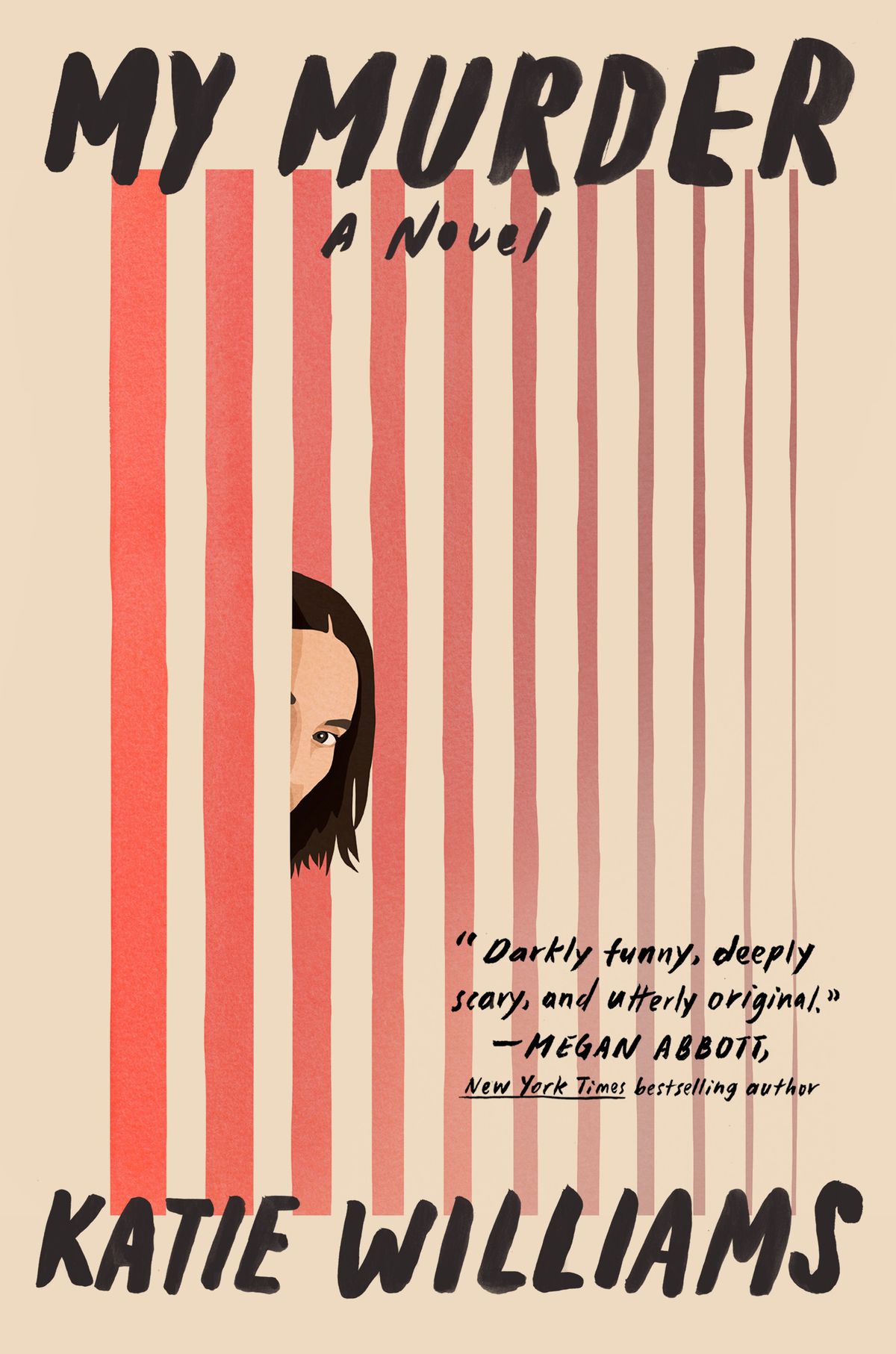
Fans of Sarah Gailey’s The Echo Wife won’t want to miss My Murder, which shares some key elements and themes with Gailey’s novel while also taking them in a unique direction. In a near-future with only a few light sci-fi elements, Lou has been resurrected along with a handful of other women murdered by a single serial killer. The politics of resurrection in her world are complicated, and few people qualify. That leaves her and her fellow victims (whose therapy circle recalls Grady Hendrix’s The Final Girl Support Group) a bit at sea as they try to come to terms with their deaths, which none of them can recall, and their new lives as celebrities for all the wrong reasons.
Like The Echo Wife, My Murder ends up thoughtfully exploring issues around women subjected to violent men — not just the personal and internal response, but the society that shapes that violence, and responds to it in ways that raise endless questions. The victims all respond to their deaths differently, questioning their culpability and the possible failures that might have made them targets, and navigating their families’ unpredictable responses to their revival. There’s one big mystery at the heart of My Murder, and a whole lot of abrupt and compelling surprises. But at the core, it’s a sci-fi twist on the survivor story, letting some very different people explore what it means to be victimized, and how to reclaim the lives that have been abruptly handed back to them. —TR
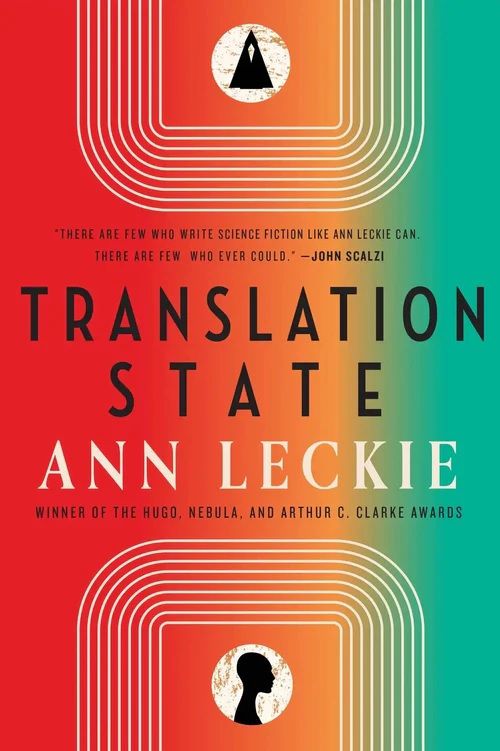
Set in the same universe as Leckie’s Imperial Radch trilogy, Translation State follows Enae, who leaves hir long-standing isolation for what was supposed to be an interstellar goose chase. After hir demanding grandmaman dies, Enae is given a diplomat title and assigned to investigate a missing Presgr translator no one expects to be found (but that the government still wants the goodwill for pretending to look for). Only, Enae doesn’t just pretend to look; sie discovers sie has quite the knack for investigating the 200-year-old cold case.
This is how hir path crosses that of Reet, an adopted maintenance worker whose mysterious origins and unsettling impulses might be explained by being the child of the fugitive translator, if you ask Enae, or the last descendant of a lost sovereign line, if you ask one particularly zealous diaspora social group. Rounding out the POV characters is Qven, a young Presgr terrified of their species’ ritual of merging with an elder, a rite of passage which will see Qven’s selfhood entirely dissolved. Enae, Reet, and Qven’s explorations of their own identities wind up having interplanetary consequences, but it’s the way Leckie gives weight to the small moments, both personal and shared, that make this book sing.
Though I’m sure there are layers that only those familiar with the Imperial Radch trilogy will notice and appreciate, the standalone Translation State and its rich exploration of self-identification and personhood serve as a fantastic introduction to Leckie’s world. So don’t hesitate to jump into Translation State if you’re – like me – new to Radch and simply drawn to a thrilling mystery where the most intimate emotions can fuel a universal upheaval. — SG
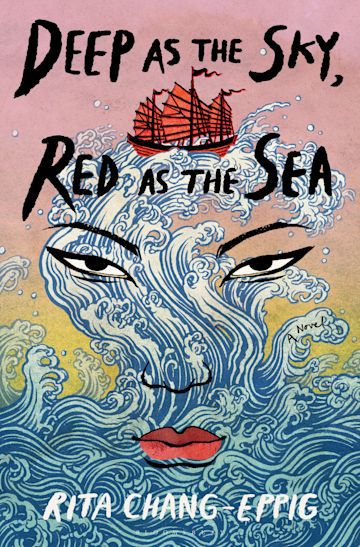
I still remember standing in my local bookstore, struck by the cover of this book, and reading the summary. It had me at “Chinese pirate queen.”
In Deep as the Sky, Red as the Sea, Chang-Eppig writes a historical fantasy about Shek Yeung, a fearsome Chinese pirate who must navigate her fleet after the death of her powerful husband. She marries her late husband’s second-in-command, with the promise of bearing an heir, in order to retain power over the fleet — and stay a major player as the Chinese Emperor seeks to rid the waters of piracy.
The book isn’t paced like a thriller, so don’t make the mistake of assuming so when you start it. It’s equal parts historical exposition, strategy, and warfare — and it especially excels in its characterization of a complicated woman forced to make difficult decisions and sacrifices in order to protect her power. Fantasy can put its villains and heroes on pedestals, but Deep as the Sky, Red as the Sea never errs in its very human portrayal of Shek Yeung, and how deftly she must play this game of political chess for survival. I was riveted. — Nicole Clark

There’s nothing cozier than a magical book about the magic of books — though this tale bends a little darker, and tells a story about witchcraft and complicated family dynamics. In Ink Blood Sister Scribe, two estranged sisters come together to solve the mystery of their family, and prevent further tragedies. In this world, blood can be concocted into ink — wielded by scribes for the creation of books with arcane powers — though the creation of such books drains a scribe’s health. When others read these books, they create magic; willing flowers to bloom, or making magical carpets that can fly in the air.
Ink Blood Sister Scribe is the perfect sister thriller to read in one sitting. It doesn’t reinvent the wheel, but it doesn’t need to — it simply delivers on a wonderfully entertaining premise. —NC
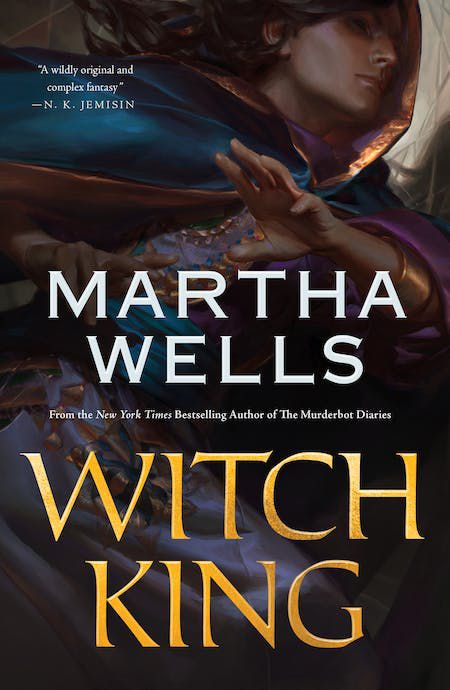
In an era where a lot of fantasy fans value quick or cozy reads, Martha Wells’ Witch King feels like a gauntlet thrown at readers’ feet. It’s a complex, meaty fantasy that opens well into what a more linear book would consider the third act, as Kai, the witch king of the title, is exhumed from a watery grave and starts exploring who betrayed him and trapped him there. Readers have to learn everything about Kai’s world as his story unfolds in multiple intertwined timelines. That includes figuring out what a “witch king” is, unwrapping the layers of what Kai actually is and why it matters. It also means being introduced to a wide variety of allies and enemies while alternately flashing back to how he met them, and slowly coming to understand the dense political machinations that shaped all their lives in the past and present.
As with Wells’ Murderbot books and her Books of the Raksura series in particular, part of the draw here is a powerful, skilled protagonist whose biggest struggles are often internal. Kai has a lot of intense emotional responses to the world, but lacks the tools to understand what to do with those feelings, or who to trust with them. Wells packs Witch King with a lot of audacious, expansive world-building for a standalone novel (albeit one that could easily invite sequels or prequels), but what makes Witch King an enjoyable read instead of a frustrating one is the way all the book’s complications and surprises are filtered through Kai’s vivid inner life, giving readers something to hold onto as they’re untangling the puzzlebox aspects of this cleverly structured novel. —TR
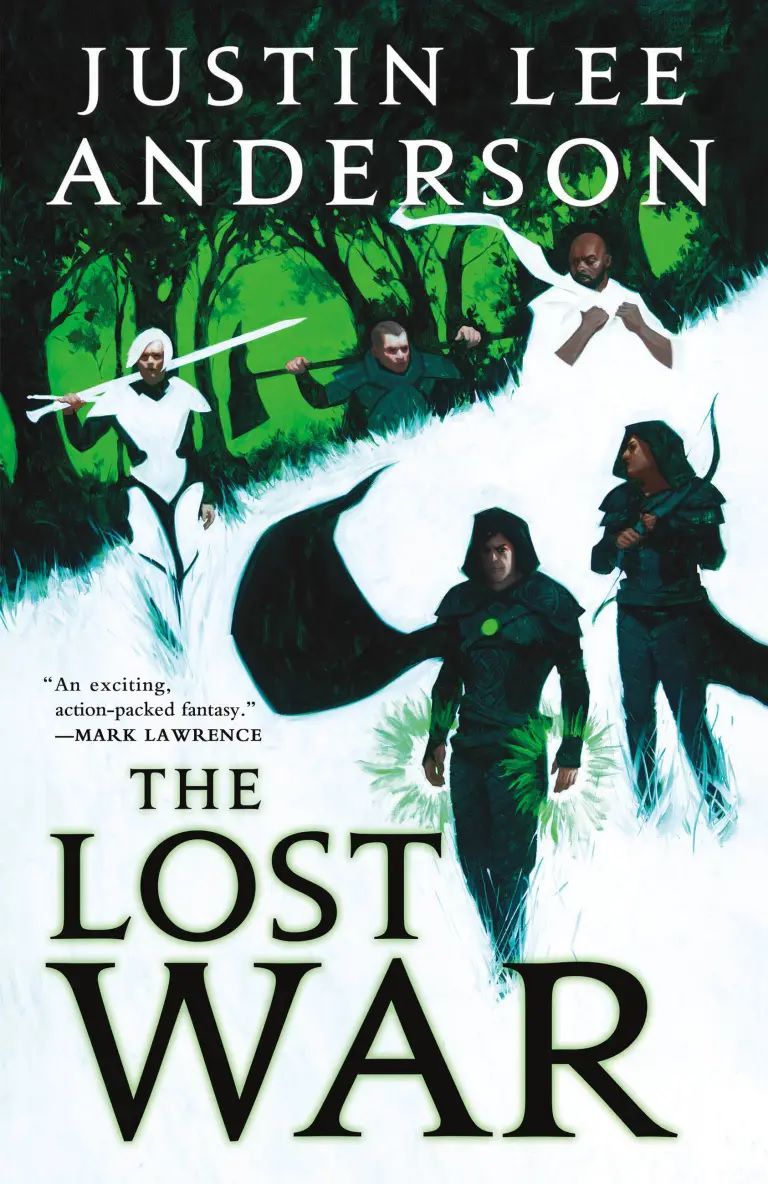
The Lost War (The Eidyn Saga #1), Justin Lee Anderson
Originally self-published in 2019, The Lost War is a traditional fantasy adventure that follows a rag-tag group of strangers on a mission across a war-torn country, fighting monsters and uncovering mysteries along the way. Despite the strong buzz leading up to the novel’s expanded publication by Orbit this year, I found myself hesitant to pick it up since it seemed so similar to many books I’ve read before. But while it’s true The Lost War doesn’t rewrite the genre – it’s filled with well-worn tropes and classic adventurer archetypes – Anderson’s skillful execution left me completely charmed. There is a real Dungeons and Dragons feel to The Lost War, and though the characters are familiar (the honorable paladin, the hard-drinking haunted soldier), Anderson does a fantastic job developing unique dynamics between the party members that vault the book beyond the sum of its parts. And it all builds up to a massive twist at the end that completely upends your understanding of what you’ve read and any previous expectations for where the second book will go. The delightfully unexpected ending once again has the fantasy community buzzing ahead of Anderson’s next release – only this time I’m right there with them. —SG
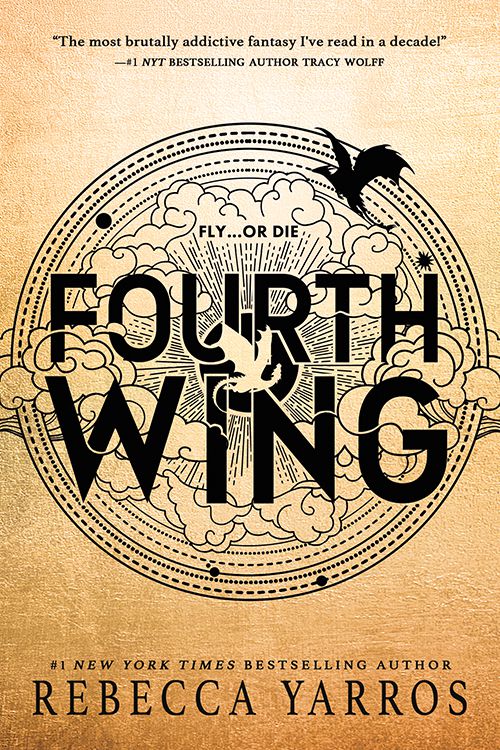
This action-packed, fantasy romance feels like a grown up version of all of my favorite young adult books. It’s got all of the fun nostalgic tropes — a magical school, deadly trials, dragon riding, and a love triangle between the main character, a golden retriever love interest, and a misunderstood emo rival — but it’s also extremely horny, as all fun fantasy romance must be.
Violet Sorrengail is thrown into a series of trials in order to prove whether she can be a dragon rider. There are a few problems with this: she trained as a scribe, never thought she’d be thrust into danger, and she also must deal with Xaden Riorson, her sworn enemy (wink). She also manages a joint condition, which leaves her in chronic pain — a fact the book handles gracefully. In one of my favorite climactic moments of the book, Violet is given a mobility device to help her with her trials; those close to her remind her that it doesn’t diminish her power, but is a tool like any other, and one that allows her to flourish. I’m thrilled to read the next installment, when it comes out in November. —NC
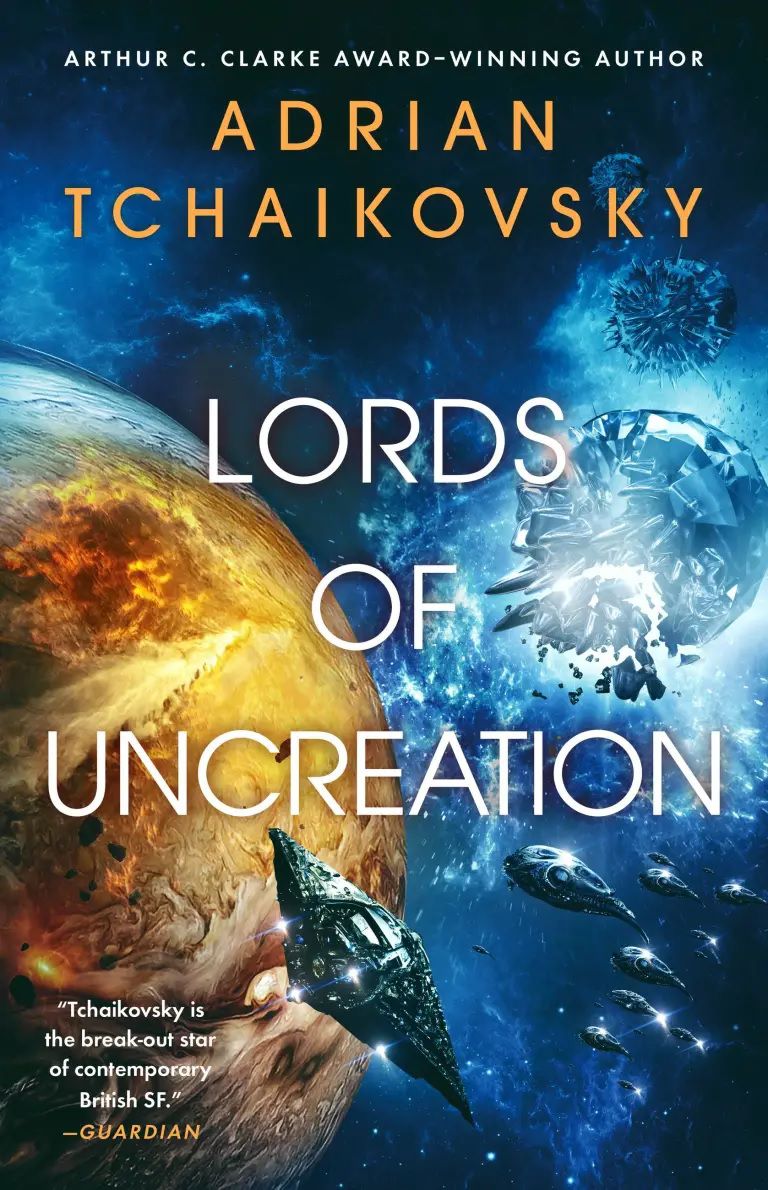
Lords of Uncreation (The Final Architecture #3) by Adrian Tchaikovsky
Reading the Final Architecture series, I had to accept long ago that I would never fully grasp the nuances of some of its central concepts, even if I understood them on an instinctual level.
This acceptance set me up well for Lords of Uncreation, which revolves around concepts that even the characters find impossible to understand, and whose minds may literally break if they try to. Like looking directly into the sun, confronting the blurred space between the real and unreal (as well as the eldritch terrors that lurk within) poses a grave threat to those doing so head-on – at least to anyone other than weary intermediary Idris Tellemier, whose risk is merely reduced rather than eliminated. But the characters Adrian Tchaikovsky has populated this world with are so grounded, so emotionally rich, and so vibrant that the details of the brain-bending threats lurking within unspace become secondary to their impact on the lives of and relationships between the Vulture God’s crew.
This is not to say that Tchaikovsky does not deliver an incredibly satisfying conclusion to the mysteries of unspace (he does!). But what I’ll remember most is how he crafted the perfect emotional resolution to this intellectually intricate tale that left me in tears and has stayed with me since. —SG
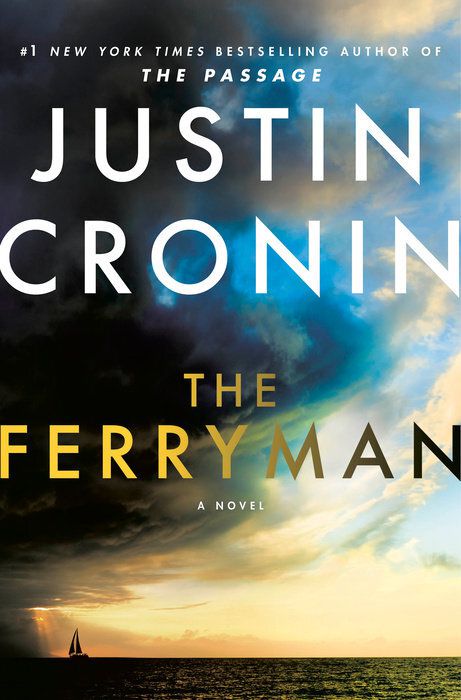
Proctor Bennett is a ferryman, whose duty is to guide unhappy citizens from the utopian Propersa to the Nursery, where they retire their old selves before returning in younger bodies with no memories of their former lives. But when Proctor is assigned to retire his own father, the troubling encounter sends him careening off the path of conformity. He begins questioning prescribed truths and confronting the darker side of Prospera, which runs off the work of a disenfranchised support staff whose discontent is building towards a revolution that pulls Proctor into its orbit.
Though this premise may feel familiar, The Ferryman is anything but. This tightly-wound, atmospheric thriller weaves together layers of knotted mystery with Proctor’s haunting POV as he grapples with his relationship to grief, happiness, family, and identity. It’s a sharply complex mystery with a cinematic quality to it. Throughout reading, I couldn’t help but fan-cast who would star in a Christopher Nolan adaptation of it. But even if you aren’t an Inception fan, it’ll be easy to become immersed in The Ferryman’s distinct dystopian world. —SG
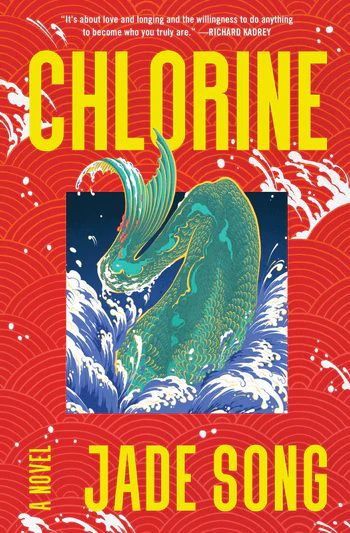
I think I have been waiting my whole life for this book — for someone to write adolescence like the body horror it is, with all of the cultural specificity of being a Chinese American girl, simply bursting at the seams with sapphic longing. Chlorine stars Ren Yu, a swimmer who believes that she is a mermaid. But she is tethered to land by her human ambition: By the parents who constantly push her to achieve, and by a swim coach who pays inappropriate attention to her — pushing her to swim faster times, while also making her feel uncomfortable in her skin.
Ren’s steadfast belief in being a mermaid feels both like a flight of fancy, and increasingly like a means of dissociating from the horrors of everyday life. Being a young girl is hard enough without having to contend with the high expectations of parents, the predation of adult men, and the casual racism of peers. Jade Song’s writing is gruesomely lyrical, contrasting the sublime with the deeply disturbing. There were several points where this book almost made me throw up, and I mean that as a high compliment. —NC
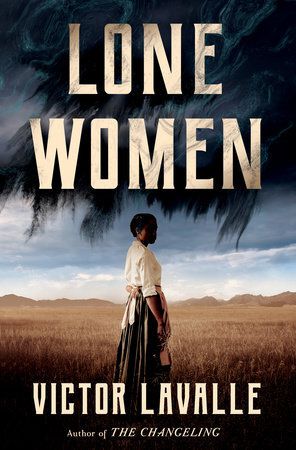
Adelaide Henry is traveling to Montana, where she plans on making a new life as a homesteader — leaving the flames of her California home, and the bodies of her parents, behind. But she has a heavy weight to carry. She lugs an enormous steam trunk wherever she goes; whenever the trunk opens, people around her die. In 1915, Montana is in the middle of a homestead boom, and though Adelaide aims to make a new start, not everyone is welcoming to a Black woman traveling alone.
Victor LaValle mixes horror and fantasy in this expertly paced tale. It’s satisfyingly bloody, while making incisive commentary on the price of being an outsider. The Western genre has long fixated on the white imagination, perhaps occasionally making space for the early struggle of the suffragettes. But LaValle’s vision of history emphasizes just how powerful white women are in upholding the interests of their white husbands, and how far these women will go to protect the societal structures that put them in proximity to power. Lone Women also examines how shame, and the family unit, ultimately uphold these unspoken rules — ostracizing those who might otherwise find community support.
This book was so good that I am now reading my way through every interview LaValle has given on the Lone Women press circuit, too, and then reading every book he references. What a gift! —NC
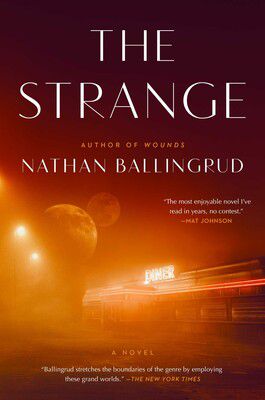
Nathan Ballingrud’s debut novel was added to my TBR pile after seeing it marketed as a blend of Ray Bradbury’s The Martian Chronicles and Charles Portis’ True Grit. I’m always dubious about marketing comparisons, but was thrilled when The Strange delivered on this high promise.
In an alternate history where humanity colonized Mars in the early 1900s, the red planet has lost all communication with Earth, leaving the fate of 14-year-old Annabelle Crisp’s mother unknown. When a thief steals Annabelle’s sole voice recording of her mom, she and her beloved Kitchen Engine, Watson, set off into the desert to retrieve what’s hers and see justice served. The longer Annabelle’s adventure goes on, the more she loses perspective and drifts away from righteousness in dogged pursuit of her own selfish desires. Struggling to comprehend that the world can’t be divided into binaries like right or wrong and black or white, Annabelle converts her fear into anger, lashing out and harming those around her, including those providing aid.
Annabelle can be vengeful and cruel, and though I often disagreed with her choices, Ballingrud makes it impossible not to understand and empathize with her. Annabelle Crisp isn’t a hero and she isn’t a villain, but she is an outstanding protagonist in a wonderfully original sci-fi tale. —SG
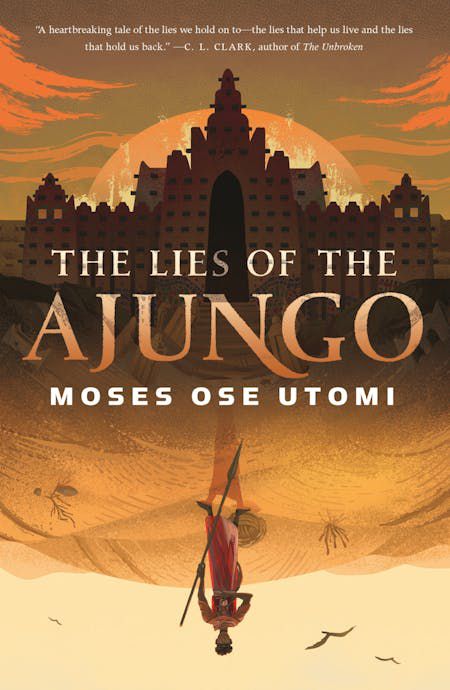
In his debut novella, Moses Ose Utomi wields his precise prose to tell a dark, visceral fable about a young boy from the City of Lies, a metropolis reliant on the brutal Ajungo Empire for their supply of water. But the cost of this trade is high: At 13, every child of the City of Lies has their tongue cut out and sent to the Ajungo.
Even with this gruesome tithe, the Ajungo send barely enough water for the population to survive, and far from what they’d need to do so comfortably, let alone thrive. Shortly before his thirteenth birthday, the brave Tutu sets out on a dangerous journey to save his mother and the city by finding their own water supply. As Tutu explores the outside world for the first time, his perception of truth and history is challenged, and he comes to understand how the decisions and deceptions of those in power rewrite the past and shape the future to uphold those with privilege and foster compliance in those who don’t. —SG
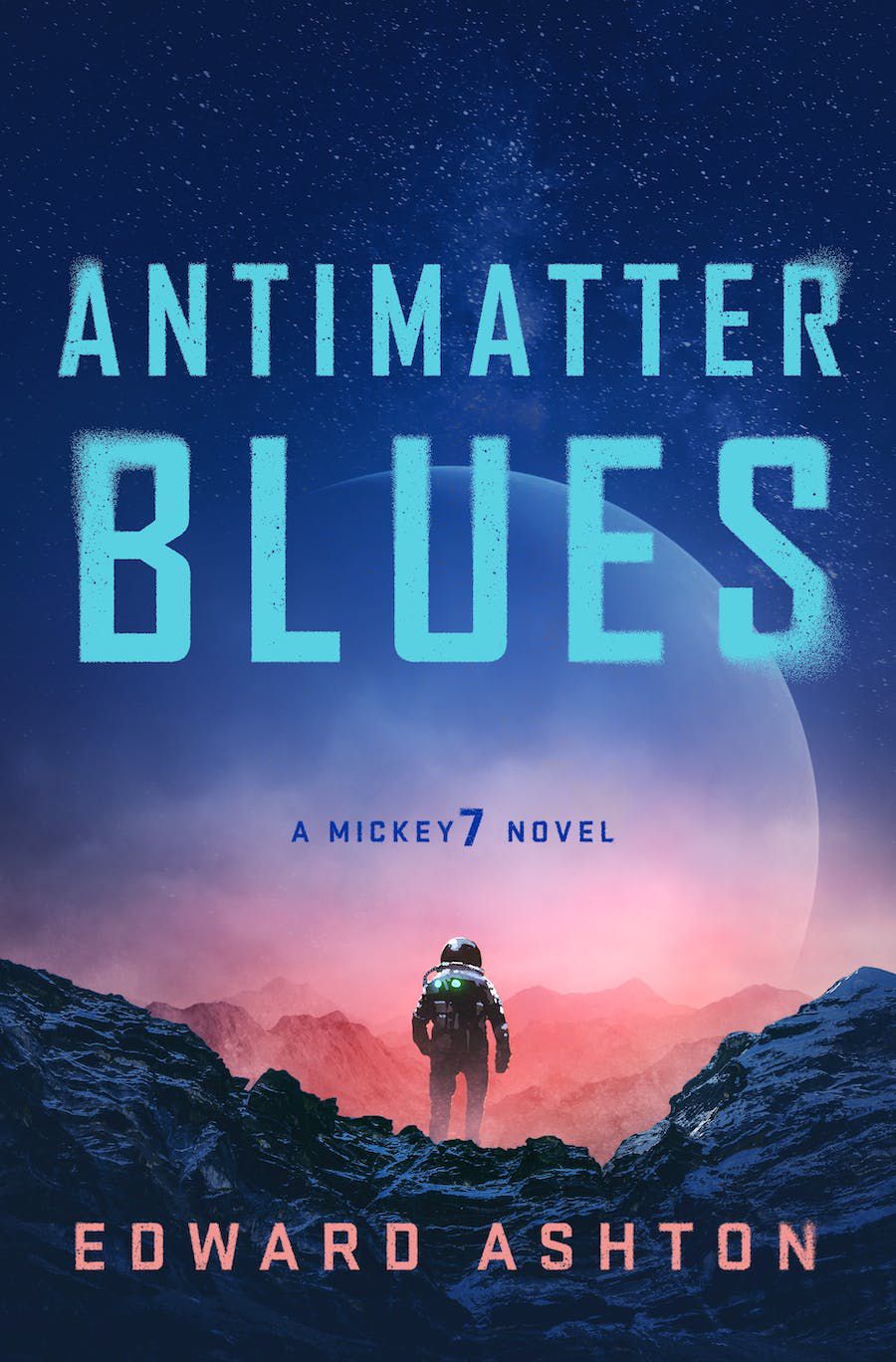
Edward Ashton’s sequel to Mickey 7, the 2022 novel Parasite director Bong Joon-ho is adapting as a movie starring Robert Pattinson, takes up two years after the first book left off, with “Expendable”-status planetary colonist Mickey still on the outs with the leadership of his struggling colony after a gutsy bluff he made to ensure his own survival. The sixth clone of the original Mickey, who accepted life as a disposable body for suicide missions in exchange for a ticket to space, Mickey 7 has walked off that job. His ongoing draw on the colony’s resources is only tolerated because he’s exaggerated his diplomatic connections with the local aliens. Then the base commander orders him to do something impossible, or the entire colony will die.
Antimatter Blues is knottier than the first book in the series, with more to take in about the ethics of survival and humanity’s predisposition toward xenophobia and selfish, self-serving behavior. It sure isn’t a pleasant book to read: A lot of Mickey’s co-colonists are bigots, most of them are indifferent to anyone else’s suffering, and at times, the book reads as though Earth deliberately sent all the worst people into space, the better to be free of them. Even Mickey himself is, at absolute minimum, generally more focused on his own safety and comfort than on the horrific results of some of his choices. But as soon as he’s placed in what seems like an unsurvivable situation, that dynamic leads to high drama, and Antimatter Blues becomes a breathless book rocketing to a surprising conclusion. Prepare to feel sorry for various alien races who have to deal with icky humanity. —TR
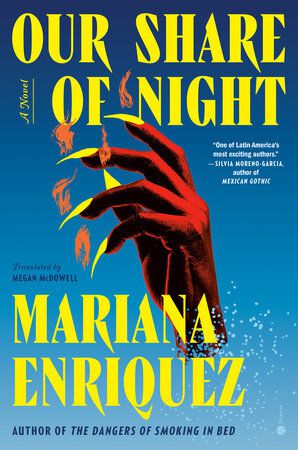
This literary tome defies categorization, so I’ll paint a scene instead: A father (Juan) whisks his son (Gaspar) away on a trip. Juan is mercurial; at turns terrifying and violent, at turns bewilderingly tender, nearly infinite in love. But he is a closed book. And if you think you’ve seen his hands elongate, spindly fingers yielding to piercing claws — well no, you didn’t.
Slow, dreadful, and razor-sharp, Our Share of Night charts a family’s desperate attempt at escaping the clutches of a death cult in Argentina. Its members seek the secrets of immortality, and many are willing to pay any price to obtain it. Set in 1981, the novel’s supernatural terrors intertwine with those of the Dirty War, the authoritarian violence offering cover for the cult to operate uninhibited.
I will read anything Mariana Enríquez writes next, it’s an absolute joy to experience her work. —NC
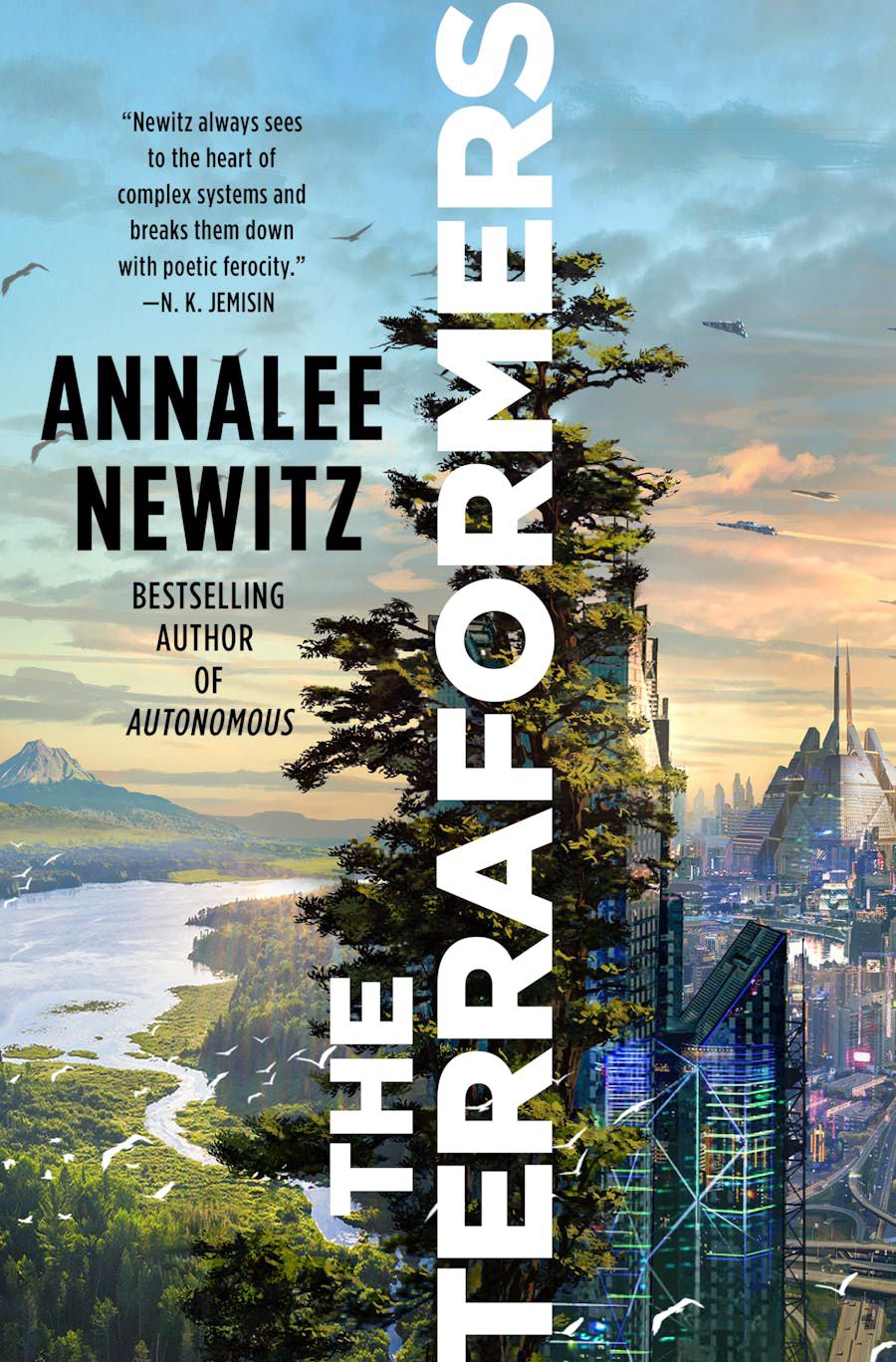
The Terraformers concerns itself with one question: As a species evolves, what behaviors stick around? Set more than 50,000 years in the future (yes, you read that number right), The Terraformers details the process of terraforming and developing a privatized planet into a tourism joint for the super rich. Technology has advanced in barely fathomable ways, allowing, for instance, the extension of human-level intelligence to animals and robots. But some aspects of society might seem familiar: Real estate developers who jack up rent with no warning? Local governments that abhor public transit? That every video call still has one person who can’t get the camera to work?
Equal parts prescient and absurd, The Terraformers splits its story over three novellas, each 700 years apart. One of those stars a sentient train who teams up with an investigative journalist … who also happens to be a cat … who’s also trying to prove this ostensibly privatized planet is in fact public land. Written by a leading science journalist of our era (author Annalee Newitz is the founder of io9 and has written for basically every major science publication under our sun), The Terraformers is unexpectedly one of the most accurate representations of the journalistic process I’ve ever read. And it all culminates in an undeniable stance: That capitalistic power must still be held in check by the truth. Even 50,000 years in the future, a free press is among society’s most essential facets. The more things change… —Ari Notis
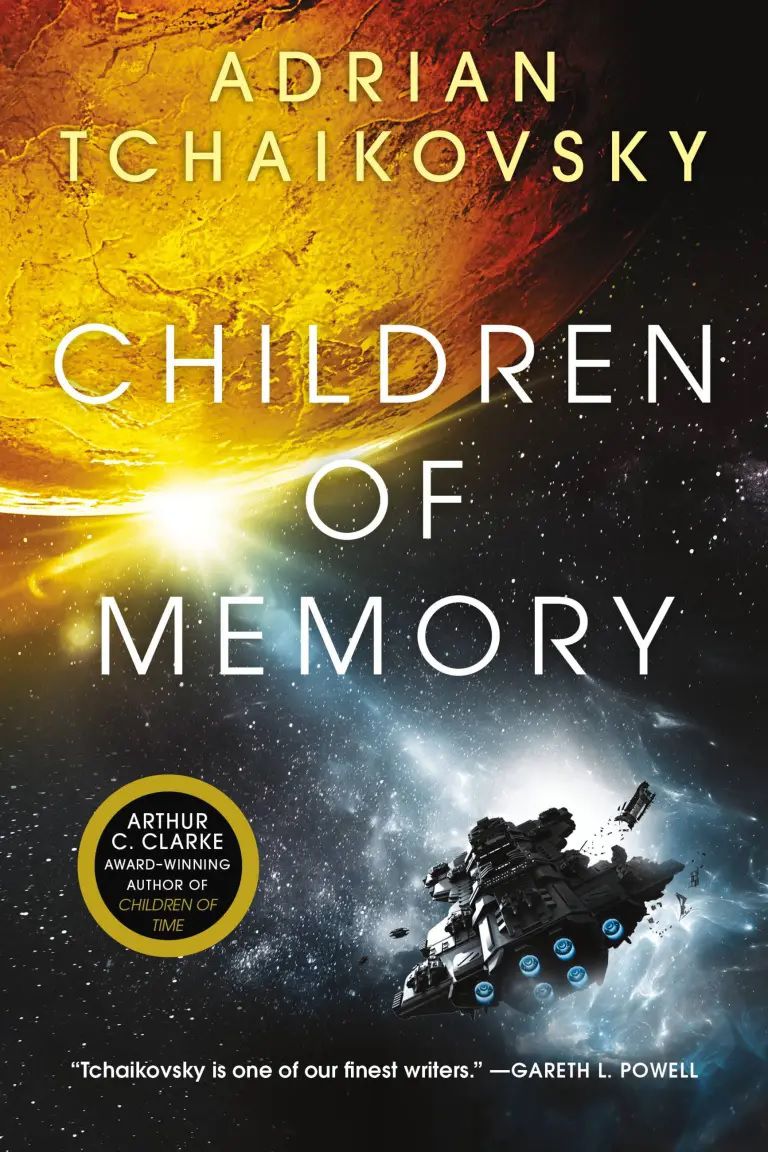
Children of Memory (Children of Time #3) by Adrian Tchaikovsky
Adrian Tchaikovsky’s highly anticipated third book in the Children of Time trilogy once again delves into some of science fiction’s headiest topics. There are parallels to earlier installments — Tchaikovsky once again uses another hyper-intelligent animal species to examine the idea of what being “alive” really means. But he also takes readers somewhere completely and utterly new, outside the scope of the previous titles, and incredibly difficult to describe without spoiling the premise entirely.
All I can say is hold on for the ride. This is an author who dives head first into Asimov-esque ideas, and who is willing to take the plot in fanciful directions. I still can’t believe that I have recommended a book about sentient spider colonies to so many friends, but here we are. This finale is worth your time. —NC
- SEO Powered Content & PR Distribution. Get Amplified Today.
- PlatoData.Network Vertical Generative Ai. Empower Yourself. Access Here.
- PlatoAiStream. Web3 Intelligence. Knowledge Amplified. Access Here.
- PlatoESG. Automotive / EVs, Carbon, CleanTech, Energy, Environment, Solar, Waste Management. Access Here.
- PlatoHealth. Biotech and Clinical Trials Intelligence. Access Here.
- ChartPrime. Elevate your Trading Game with ChartPrime. Access Here.
- BlockOffsets. Modernizing Environmental Offset Ownership. Access Here.
- Source: https://www.polygon.com/23691206/best-fantasy-books-sci-fi-2023
- :has
- :is
- :not
- :where
- $UP
- 000
- 13
- 14-year-old
- 2019
- 2022
- 2023
- 30
- 50
- 500
- 7
- 700
- a
- ability
- About
- about IT
- above
- abruptly
- Absolute
- absolutely
- Accept
- acceptance
- accepted
- accurate
- accused
- Achieve
- across
- Act
- actually
- adaptation
- added
- adopted
- adrian
- Adult
- advanced
- Adventure
- Adventurer
- After
- again
- against
- ago
- ahead
- Aid
- aimed
- aims
- AIR
- Alexander
- alien
- aliens
- All
- Allowing
- allows
- almost
- alone
- along
- also
- always
- am
- ambition
- American
- among
- an
- and
- anderson
- anger
- animal
- animals
- Another
- Anticipated
- any
- anyone
- anything
- apart
- appreciate
- approaching
- Arcane
- architects
- architecture
- ARE
- Argentina
- around
- Art
- AS
- ask
- aspects
- assigned
- astronaut
- At
- atmospheric
- attention
- audacious
- author
- Authoritarian
- away
- back
- background
- base
- Basically
- Battle
- BE
- because
- become
- been
- before
- begin
- behalf
- behind
- being
- belief
- believe
- believes
- beloved
- below
- BEST
- Better
- between
- Beyond
- Big
- Biggest
- Bit
- Black
- Blend
- blood
- Bloody
- Bloom
- Blues
- blur
- boat
- bodies
- body
- book
- Books
- boom
- both
- Bottom
- brave
- Brazilian
- Break
- Bringing
- build
- Building
- builds
- bull
- but
- Buzzing
- by
- calculating
- california
- call
- came
- camera
- CAN
- capture
- carry
- case
- casual
- CAT
- catastrophic
- causes
- celebrities
- central
- challenged
- champion
- change
- Changes
- character
- characters
- Charles
- Charts
- chase
- check
- Chess
- child
- Children
- chinese
- choices
- Christopher
- cinematic
- Circle
- Cities
- Citizens
- City
- cityscape
- classic
- clear
- Close
- closed
- coach
- codes
- cold
- Colony
- COM
- combat
- come
- comes
- comfort
- coming
- Commentary
- Communication
- community
- compare
- compelling
- completely
- complex
- compliance
- complicated
- comprehend
- concept
- concepts
- Concerns
- conclusion
- condition
- confident
- Connections
- Consequences
- Consider
- constantly
- control
- convince
- convinced
- Core
- Cost
- could
- country
- cover
- covered
- crafted
- Crashing
- create
- creation
- creatures
- CRISP
- cult
- cultural
- Cut
- DANGER
- Dangerous
- Dark
- darker
- dead
- deal
- Death
- deaths
- debut
- decisions
- dedicated
- deep
- deeper
- deliver
- delivered
- delivers
- demanding
- dense
- depicting
- describe
- description
- DESERT
- Despite
- destroyed
- details
- developers
- developing
- device
- DID
- Die
- different
- difficult
- dire
- direction
- directions
- directly
- discontent
- Discovers
- discovery
- discussion
- disputes
- distance
- divided
- do
- does
- Doesn’t
- doing
- done
- Dont
- down
- Dragon
- Drama
- draw
- drawing
- drawn
- dynamic
- dynamics
- dystopian
- each
- Earlier
- Early
- earth
- easily
- easy
- echo
- Edward
- effectively
- effects
- elder
- elements
- eliminated
- Else’s
- embracing
- emerging
- emotions
- emphasizes
- Empire
- encounter
- end
- ended
- ending
- Endless
- ends
- enemies
- Engine
- enjoyable
- enormous
- enough
- ensure
- entertaining
- Entire
- entirely
- equal
- Era
- especially
- essential
- estate
- Ether (ETH)
- ethics
- Even
- EVER
- Every
- everyday
- everyone
- everything
- evolves
- examine
- Examines
- excellent
- exchange
- excited
- Excitement
- execution
- exists
- expanded
- expansive
- expectations
- expects
- experience
- expertly
- explained
- exploration
- explore
- explores
- Exploring
- extension
- extremely
- Face
- facets
- facial
- fact
- Falls
- familiar
- family
- fan
- fans
- fantastic
- FANTASY
- far
- faster
- fate
- favor
- Favorite
- Favorites
- fear
- Features
- Featuring
- feel
- feelings
- Feet
- fellow
- Ferryman
- few
- Fiction
- field
- fight
- fighting
- Figure
- Figures
- filled
- fin
- final
- finale
- Find
- finding
- First
- first time
- fitting
- five
- flashing
- FLEET
- flight
- floating
- flourish
- flying
- focused
- follows
- For
- forest
- Former
- forms
- Foster
- found
- founder
- Fourth
- Free
- friction
- friends
- from
- front
- frustrating
- Fuel
- fun
- further
- future
- futuristic
- game
- Gauntlet
- generally
- generation
- generations
- genre
- genres
- get
- Girl
- given
- gives
- Giving
- Go
- Goes
- Golden
- good
- Goodwill
- Government
- Governments
- grace
- grass
- Green
- Griffin
- Group
- Growing
- grown
- guide
- had
- halfway
- hand
- handful
- Handles
- Hands
- happened
- happens
- Hard
- harming
- Have
- having
- he
- head
- Health
- Heart
- heavy
- Held
- help
- henry
- her
- here
- Hero
- Heroes
- Hesitant
- Hidden
- High
- highly
- him
- Hindu
- his
- historical
- history
- hold
- Home
- Hong
- Hong Kong
- horizon
- horror
- How
- How To
- HTTPS
- human
- Humanity
- i
- I’LL
- idea
- ideas
- identities
- Identity
- if
- image
- imagination
- immersed
- Impact
- Imperial
- impossible
- in
- includes
- Including
- increasingly
- incredibly
- individuals
- influence
- influenced
- innate
- installment
- instance
- instead
- Intelligence
- interest
- interests
- intermediary
- internal
- Internet
- Interstellar
- intimate
- into
- introduced
- Introduction
- investigate
- investigative
- invite
- island
- isolation
- issues
- IT
- ITS
- itself
- jack
- Job
- joint
- journalist
- journey
- jpg
- juan
- jump
- just
- Justice
- Justin
- Keep
- Key
- King
- Kingdom
- Know
- known
- Kong
- Land
- large
- Last
- Late
- latest
- layers
- lead
- Leadership
- leading
- Leads
- LEARN
- least
- leaving
- Lee
- left
- less
- Lessons
- let
- letting
- Level
- Leverage
- lies
- Life
- light
- like
- Line
- lines
- Listed
- little
- Lives
- local
- locations
- lofty
- Long
- long-standing
- longer
- Look
- looking
- LOOKS
- Lords
- Loses
- lost
- Lot
- lou
- love
- made
- magic
- Main
- maintenance
- major
- make
- MAKES
- Making
- managed
- manages
- many
- Marketing
- mars
- massive
- Match
- Matters
- May..
- maybe
- me
- mean
- means
- Members
- Memories
- Memory
- Men
- mentioned
- merchandise
- merely
- merging
- met
- Middle
- might
- minds
- minimum
- missing
- Mission
- missions
- mistake
- mixes
- mobility
- mom
- Moments
- more
- most
- mother
- movie
- Movies
- much
- multiple
- murder
- Murray
- must
- my
- mysterious
- Mystery
- name
- Nations
- Navigate
- navigating
- nearly
- Need
- neighboring
- Neither
- never
- New
- Newest
- next
- night
- no
- None
- normal
- nothing
- Notice..
- novel
- November
- now
- number
- obtain
- ocean
- of
- off
- offering
- official
- often
- Old
- on
- once
- ONE
- ongoing
- only
- open
- opens
- operate
- or
- Orange
- Orbit
- ORBS
- order
- orders
- original
- origins
- Other
- Others
- otherwise
- our
- out
- outside
- outstanding
- over
- own
- paced
- packed
- Packs
- Pain
- paint
- pandemic
- Parallels
- parents
- part
- particular
- particularly
- parts
- party
- passage
- past
- path
- Pay
- pays
- peers
- People
- people’s
- perception
- perfect
- perhaps
- person
- personal
- perspective
- pick
- Pictures
- pink
- Piracy
- Place
- planet
- Planets
- planned
- plans
- plants
- plato
- Plato Data Intelligence
- PlatoData
- Play
- player
- please
- points
- political
- politics
- Polygon
- populated
- population
- poses
- possible
- power
- powered
- powerful
- powers
- precise
- Prepare
- present
- press
- prevent
- previous
- price
- privilege
- problems
- process
- promise
- protagonist
- protect
- Prove
- proved
- providing
- public
- public transit
- Publication
- Pulls
- pursuit
- Push
- Pushing
- put
- qualify
- quality
- question
- Questions
- Quick
- Race
- racism
- raise
- rapidly
- rather
- RAY
- Read
- readers
- Reading
- real
- real estate
- realistic
- realize
- really
- reasons
- recommended
- recording
- records
- Red
- Reduced
- references
- reinvent
- relationship
- Relationships
- relatively
- release
- Releases
- remains
- remember
- ren
- Rent
- replaced
- Resolution
- Resources
- Respond
- response
- responses
- Results
- retain
- return
- returning
- Reveals
- reverse
- Revolution
- revolves
- Rich
- Rid
- Ride
- riding
- right
- Risk
- risks
- Rival
- ROBERT
- robots
- rocky
- rounding
- rules
- running
- runs
- Safety
- saga
- same
- SAND
- Save
- saw
- say
- scene
- School
- sci-fi
- Science
- Science Fiction
- scope
- SEA
- Second
- secondary
- see
- seeing
- Seek
- Seeks
- seem
- seemed
- seems
- seen
- send
- sends
- sense
- sent
- sequel
- sequels
- serial
- Series
- serve
- set
- Sets
- setting
- setup
- several
- Shadow
- Shape
- shaped
- shapes
- Share
- shared
- Shares
- sharp
- she
- Shortly
- show
- showing
- Shows
- side
- similar
- simply
- since
- single
- sister
- sits
- Sitting
- situation
- sixth
- skilled
- Skin
- sky
- Slowly
- small
- So
- so Far
- Social
- societal
- Society
- sold
- SOLVE
- Solving
- some
- Someone
- something
- somewhere
- son
- Soon
- sovereign
- Space
- special
- specificity
- Splits
- Sponsored
- Staff
- standalone
- stands
- Star
- Stars
- start
- starts
- State
- Status
- stay
- stayed
- steadfast
- steals
- Steam
- Stick
- Still
- storms
- Story
- Strategy
- Strikes
- strong
- structured
- structures
- Struggle
- Struggles
- Struggling
- Successfully
- such
- suffering
- Suggests
- Suicide
- SUMMARY
- Sun
- Super
- supernatural
- supply
- support
- supposed
- sure
- Surface
- surprises
- surprising
- survival
- survive
- Take
- takes
- taking
- tale
- targets
- teacher
- Teaching
- teams
- Technology
- television
- tell
- tells
- Tender
- terms
- text
- than
- that
- The
- The Future
- the world
- their
- Them
- themes
- then
- therapy
- There.
- These
- they
- things
- think
- Third
- this
- this year
- those
- though?
- thought
- threat
- threats
- three
- thrilled
- thrilling
- Thrive
- throne
- Through
- throughout
- thrust
- ticket
- time
- timelines
- times
- titan
- Title
- titles
- to
- together
- tolerated
- too
- tool
- tools
- top
- Topics
- Tor
- touching
- Tourism
- toward
- towards
- trade
- traditional
- Train
- trained
- transit
- Translation
- Traveling
- tree
- trials
- tried
- trip
- troubling
- true
- Trust
- truth
- try
- turns
- tv
- tv show
- twist
- twists
- two
- Ultimately
- uncover
- undeniable
- under
- understand
- understanding
- understood
- Unexpected
- unique
- unit
- Universal
- Universe
- unknown
- Unpacking
- unpredictable
- unravels
- Unreal
- Update
- updated
- upheaval
- Uphold
- Upside
- us
- used
- uses
- using
- value
- variety
- various
- Vault
- version
- vertical
- very
- vibrant
- victims
- Video
- Videos
- Villains
- vision
- Voice
- Waiting
- walked
- walking
- want
- wanted
- wants
- war
- warning
- was
- watching
- Water
- Waters
- Watson
- Wave
- waves
- Way..
- ways
- we
- webp
- weight
- welcoming
- WELL
- Wells
- were
- Western
- What
- Wheel
- when
- whenever
- whether
- which
- while
- white
- WHO
- whole
- whose
- why
- wide
- wife
- will
- william
- willing
- wind
- Wing
- with
- within
- without
- woman
- Women
- Work
- worked
- worker
- world
- Worst
- worth
- would
- write
- writer
- writing
- written
- Wrong
- wrong reasons
- year
- years
- yellow
- yes
- yielding
- you
- young
- Younger
- Your
- youtube
- zephyrnet





